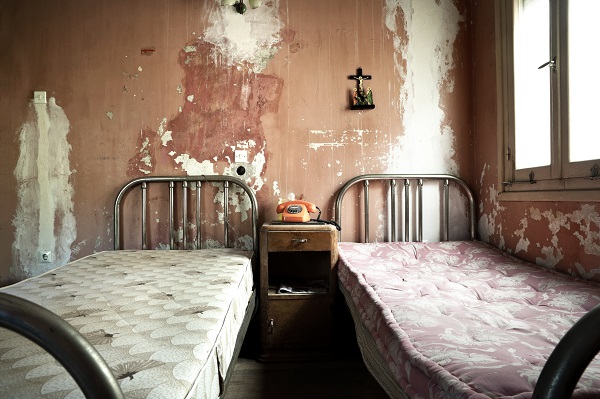
<h4 style="text-align: justify;">Housing problems were the number one factor negatively impacting children&#8217;s learning during 2016. Teachers&#8217; union NZEI is supporting the Healthy Homes Guarantee Bill to help children stay well &#8211; and to stay in school.</h4>
<p style="text-align: justify;">Jan Tinetti, NZEI executive member and principal of Merivale School in Tauranga explains&#8230;</p>
<p style="text-align: justify;">We have a worryingly large number of New Zealand children living in poverty. We know that more than 70 per cent of these children live in rental accommodation. For many of these children this accommodation is not fit for purpose.</p>
<p style="text-align: justify;">For many, these children are faceless statistics and it’s easy to dismiss the them as being a figure on a piece of paper.</p>
<p style="text-align: justify;">But this isn’t the case for me. The majority of the Merivale School roll comes from this demographic. They are part of our school whānau and it’s heartbreaking seeing the conditions that they live in and the negative impact these conditions have upon their learning.</p>
<p style="text-align: justify;">As I said I live in Tauranga – well known as a so-called wealthy city and, of course, for its amazing climate. Yet I have been into my families’ homes in the middle of winter, homes that were so cold I lost the feeling in my extremities. Condensation and mold are prevalent. I can feel the damp in my bones.</p>
<p style="text-align: justify;">Typically these homes have no heating options and so, during winter, families move into the same room to keep everyone warm. Children who live in these homes tend to be sicker over the winter period than at other times. It is during the winter months that we have greater incidents of ailments at Merivale including school sores, other skin diseases, asthma attacks, other respiratory complaints, colds, flu and even rheumatic fever.</p>
<p style="text-align: justify;">During August 2016 we had 11 of our 150 children hospitalised at different times of the month. All 11 of these children lived in inadequate housing. One of our 6-year-olds was absent for 45 days during terms two and three – some of these days were spent in hospital as he battled illness.</p>
<p style="text-align: justify;">I visited his house on a number of occasions. His mother worked hard to keep the house tidy and clean but what she couldn’t combat was the cold and dampness that was evident from the moment I walked in the door. As a mother I would be distressed if I had to bring my children up in that environment – I am incredibly grateful that I didn’t have to do this.</p>
<p style="text-align: justify;">This mother wanted to change but she had no other options. Instead she was one of our many parents who gathered community donated blankets from the school, moved her family into one room, and did the very best she could for her family.</p>
<p style="text-align: justify;">These children love coming to school over the winter months because it is warm and dry but they struggle to focus on learning, not only because they are often struck down with sickness, but also because they worry about their living arrangements.</p>
<p style="text-align: justify;">They talk about hating the cold in their houses and how they are kept awake at night by all the people they are sharing rooms with. They will often tell us that they wish it was warm at home where everyone has their own space.</p>
<p style="text-align: justify;">Just to give you an insight into how bad these living conditions are becoming: Inadequate heating and insulation was an issue in all the houses of our children who ended up in hospital. A small number of the houses also had other issues; I have visited a house where raw sewerage was bubbling up at the back door and another where the shower tray was completely non existent and the dirt underneath the house could be seen through the missing bathroom floorboards.</p>
<p style="text-align: justify;">Not one of these families want to say anything for fear they could lose their homes. With limited housing options available, our parents are willing to put up with these terrible situations rather than have nothing at all. </p>
<p style="text-align: justify;">I have spoken to colleagues in other low socioeconomic communities who report similar housing situations for their whānau. Issues with housing were the number one factor that had a negative impact upon children engaging with their learning during 2016.</p>
<p style="text-align: justify;">Ensuring minimum standards for heating and insulation would go some way to alleviate the stresses that children have in this area. It would certainly assist them to stay healthy so they can fully engage in their learning <a class="wpil_keyword_link" href="https://www.schoolnews.co.nz/2015/10/developing-opportunities-at-school-with-a-view/" title="opportunities" data-wpil-keyword-link="linked" target="_blank">opportunities</a>.</p>

EXCLUSIVE: Teachers used to be paid two to three times more than minimum wage workers,…
After an “overwhelming” vote to reject the latest Government offer, secondary school teachers will begin…
Second-language learning should be compulsory, says a new report from a forum bringing together academics,…
A new entitlement aimed to improve access to learning support coordinators for schools with students…
Educators have raised questions about the Ministry of Education’s new secondary school subjects, set to…
Professional learning and development (PLD) for teachers needs to be higher impact for teachers and…
This website uses cookies.